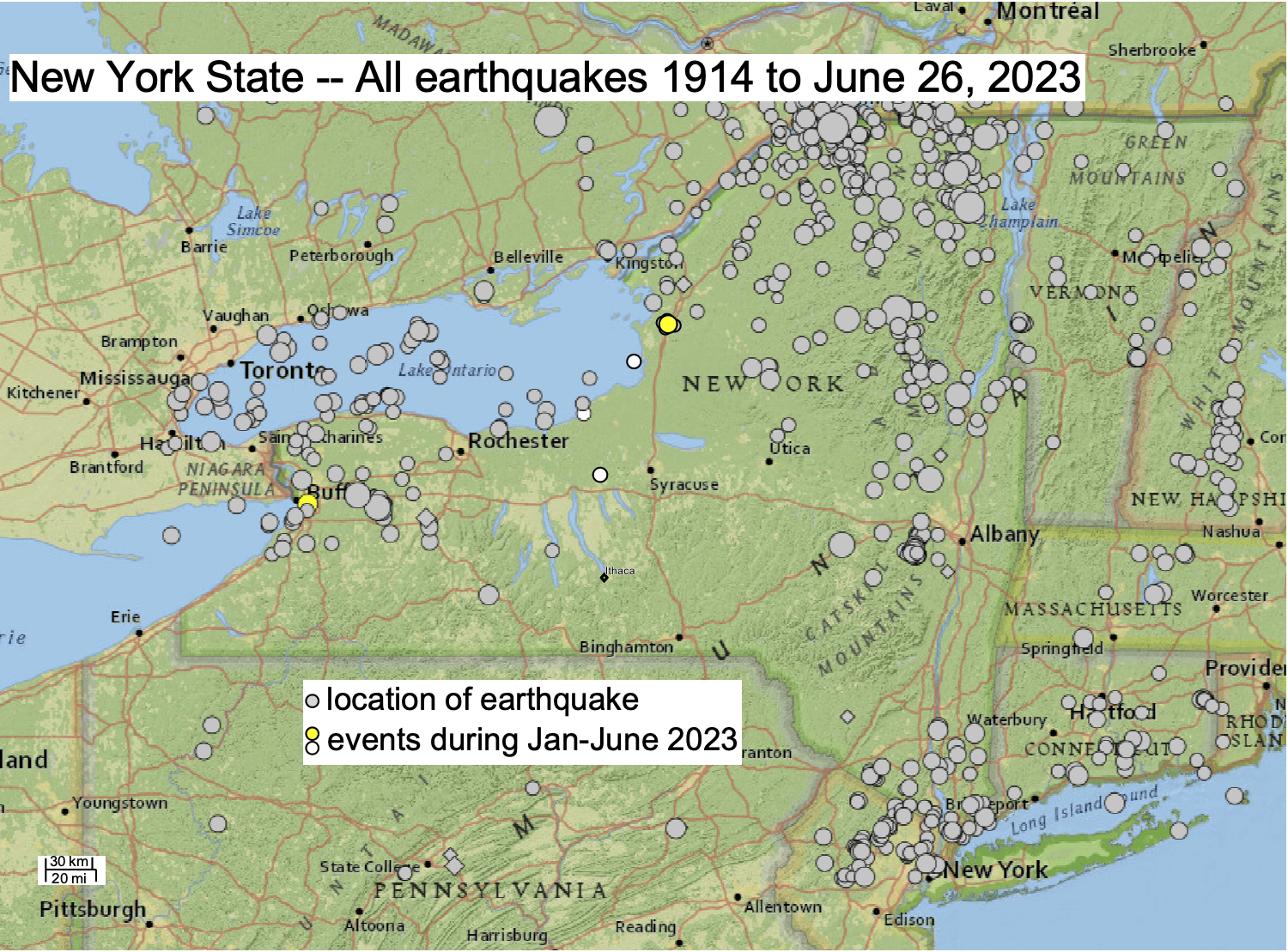Earthquake hazards in the New York City area Map depicting the extent of the Ramapo. Map showing Quaternary faults in the western US Note that most faults that can affect residents are. WEB As in most other areas east of the Rocky Mountains the best guide to earthquake hazard in the northeastern US Is probably the locations of the past. WEB Buffalo Sits Near Pretty Significant Fault Line A magnitude 38 earthquake that hit the. WEB The Clarendon-Linden fault system is a major series of fault lines in western New York state in the United States..
Earthquake hazards in the New York City area Map depicting the extent of the Ramapo. Map showing Quaternary faults in the western US Note that most faults that can affect residents are. WEB As in most other areas east of the Rocky Mountains the best guide to earthquake hazard in the northeastern US Is probably the locations of the past. WEB Buffalo Sits Near Pretty Significant Fault Line A magnitude 38 earthquake that hit the. WEB The Clarendon-Linden fault system is a major series of fault lines in western New York state in the United States..
**Magnitude 4.8 Earthquake Shakes New York City Region** A magnitude 4.8 earthquake struck the New York City region on Friday morning, causing buildings to rattle and sending residents into the streets. According to the United States Geological Survey (USGS), the earthquake occurred at 10:20 a.m. local time and was centered in Readington Township, New Jersey, approximately 40 miles west of New York City. The temblor was widely felt throughout the region, including in New York City, Philadelphia, and Hartford, Connecticut. No injuries or major damage have been reported at this time. The USGS initially measured the earthquake as a 4.8 magnitude, but it was later revised to 4.7. Aftershocks are possible in the coming days. Experts say that earthquakes of this magnitude are rare in the New York City region, but not unprecedented. The last earthquake of similar magnitude to hit the area was a 5.0 temblor in 2011. Residents are advised to remain calm and follow the instructions of local authorities. If you feel an earthquake, drop to the ground, take cover under a sturdy table, and hold on until the shaking stops.

Deep Geothermal Heat Research Cornell University
**New York Area Rocked by Magnitude 4.0 Earthquake** On October 19, 1985, at 4:00 AM, a magnitude 4.0 earthquake struck the New York metropolitan area, jolting residents awake. The epicenter was located in an unincorporated part of Greenburgh between Ardsley and Yonkers. The earthquake was felt throughout the area, with some residents mistaking it for a subway train or a plane flying overhead. Others reported feeling an explosion. While not as strong as the 1884 earthquake that struck Brooklyn, which was estimated at 5.0 on the Richter scale, Saturday's earthquake was still significant and caused some minor damage. Just recently on October 2, 2021, at 12:4 AM, a predawn earthquake centered just north of New York City shook parts of New Jersey and Connecticut. The magnitude of that earthquake was 2.2. Earthquakes are relatively rare in the New York area, but they do occur from time to time. The strongest earthquake ever to hit the area was the 1884 Brooklyn earthquake, which caused widespread damage and was felt as far away as Boston. In recent years, there have been several smaller earthquakes in the region, including a magnitude 3.1 earthquake that struck near Dover, New Jersey in 2014. While earthquakes can be frightening, they are typically not dangerous. However, it is important to be aware of the possibility of earthquakes and to know what to do in the event of one.
**Largest Earthquake in Rochester's History Shakes Up Western New York** Rochester, NY - A powerful earthquake measuring 3.8 magnitude struck near Rochester, New York, early Monday morning, making it the largest earthquake ever recorded in the region. According to the United States Geological Survey (USGS), the epicenter of the quake was located in the suburb of West Seneca, east of Buffalo. The quake occurred at approximately 5:45 AM, sending tremors through parts of upstate New York. Residents reported feeling the quake as far away as Rochester and Syracuse. Some reported shaking furniture, rattling windows, and even brief power outages. The earthquake is the largest to hit Rochester since records began. Previous significant quakes included a 3.4 magnitude earthquake in 2017 and a 3.0 magnitude quake in 2016. The USGS has not reported any major damage or injuries as a result of the quake. However, experts are urging residents to check their homes and businesses for any potential damage. Scientists are still investigating the cause of the earthquake. New York State is not typically considered a seismically active region, but small earthquakes can occur occasionally. Residents are advised to be prepared for potential aftershocks, which can occur in the days or weeks following a major earthquake. The USGS recommends having an emergency plan in place and knowing what to do when an earthquake strikes.

Comments